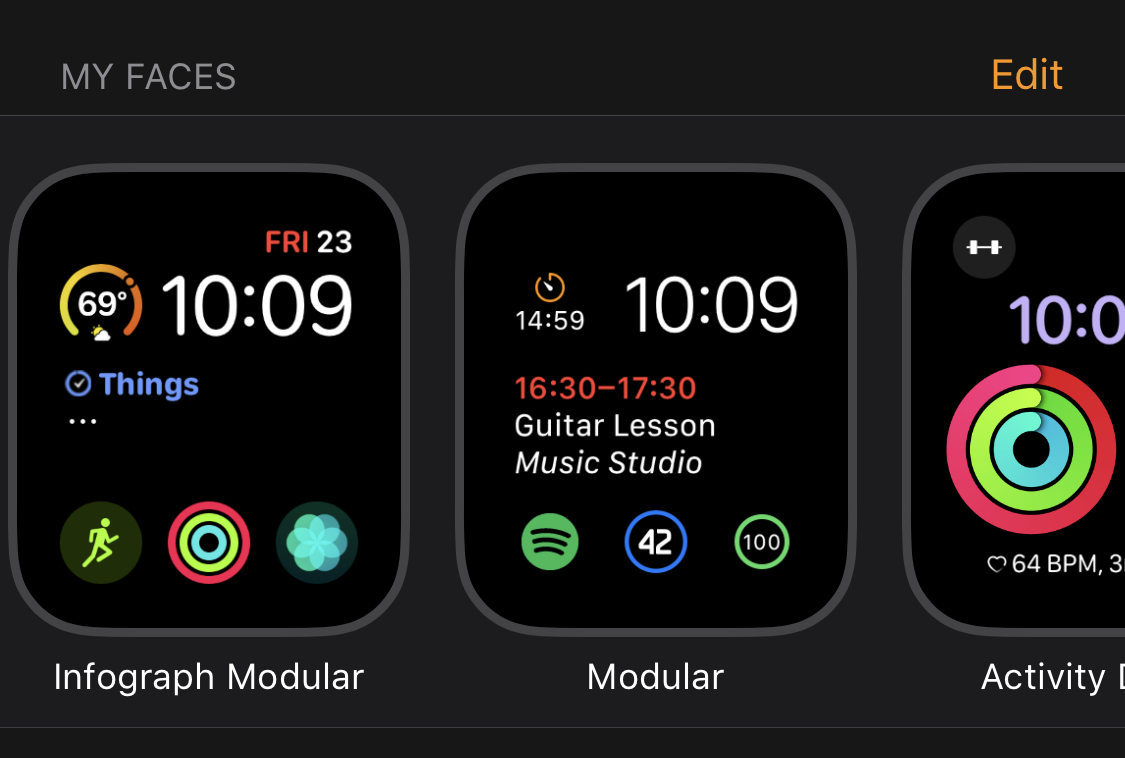APPLE WATCH: NOT-A-REVIEW
There seems to be an inverse correlation between how much I pay for an Apple product and how much I enjoy using it. My Macbook Pro (2016, Touchbar) is functional at best, and unusably glitchy uncomfortably frequently. My iPhone (XS) is wicked fast and a pleasure to use, although my iPad Pro (Pro, 10.5) is more delightful and practical to use because of ProMotion and the larger display. But after living with the Apple Watch (Series 4) for the past month, it’s become my favorite computing device.
The Review
It’s responsive. It’s mostly bug-free. It stays perfectly in sync with my phone. Battery life is excellent. The Series 4 screen size looks “right” and makes the previous size look like a toy.
Since the beginning of the year, I’d thought about getting an Apple Watch for the first time for two main use cases: as a better fitness tracker than the glorified pedometer I had at the time, and for access to notifications during occasional times when my phone was in a bag or difficult to reach. It’s exceeded my expectations in both use cases.
As an activity tracker, I appreciate the semi-continuous heart rate monitoring, which leads to more accurate calorie expenditure estimates and lets me see how intensely I’m exercising. I love seeing the GPS tracking on outdoor workouts and pace overlay shown in the iPhone app.
As a workout companion, two killer use cases I didn’t expect but now love: I can run my entire workout from my watch, which frees me from the distraction of my phone; and I can remote-trigger the camera from my watch, which means I can setup my phone at a distance to record my form, and start/stop a video recording just before starting a set.
Everyone has their own use cases. And that’s the point.
The Bigger Picture
Of the four computing devices I regularly use, the Mac and Watch sit on opposite ends of a spectrum. The Mac is big and a little slow to wake; the experience of using it comes with a sense of gravitas and commitment. It is a destination. On the other hand, the Watch is always available, wakes effortlessly, and provides timely, useful information. It’s effortless.
In one case, you go to the computer; in the other, the computer comes to you.
I find this fascination because of how uncommon the latter is in the world of software. Despite massive increases in computational capability and improvements in the tools used to design and develop software, so much of modern computing still feels like a destination, where the human has to accommodate the machine, or contort to the particular design choices of an idiosyncratic designer.
A truly personal computing device should allow its user to customize the information it displays, as well as how and when that information is presented.

Imagine the opposite — the way things are today. For example, suppose I wanted to change the way my todo app works, or find an implementation of a particular feature. Today, I’d likely have to switch to an entirely different app, made by different people with different design decisions, and hope for an option to import tasks from my previous app (often without any luck). My life and obligations haven’t materially changed; the list of things I have to do haven’t changed, but I’ve had to move (“go to”) a different piece of software to do mostly-the-same-thing with a few changes.
It doesn’t need to be this way. In fact, I think information should be de-coupled from interfaces. I keep thinking about having a personal repository of information — the data that makes up my todo list, for example — exposed as an API, and myriad software that plugs into that. At one end are various interfaces that visualize this information in different ways — akin to different watch faces, or even swappable straps for aesthetic reasons or personal preference. At the other end are intensive computations that parse and analyze my data, leveraging “hard” computational breakthroughs to better organize my tasks. These computations would write their output back to the same data store, to be displayed by user interfaces or further processed by other algorithms.
I wish personal software worked like that. For now, though, I deeply appreciate the step the Apple Watch takes in that direction.